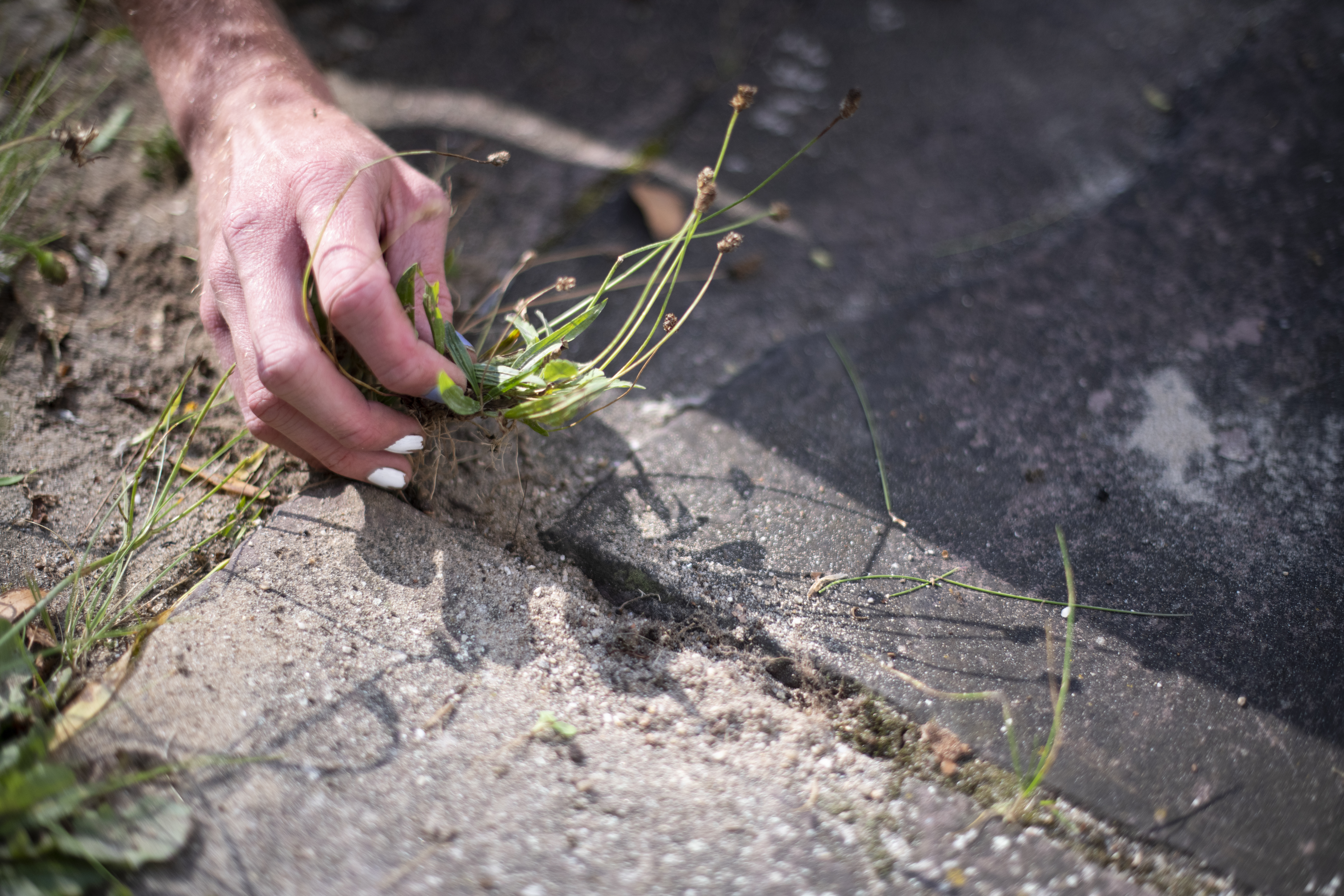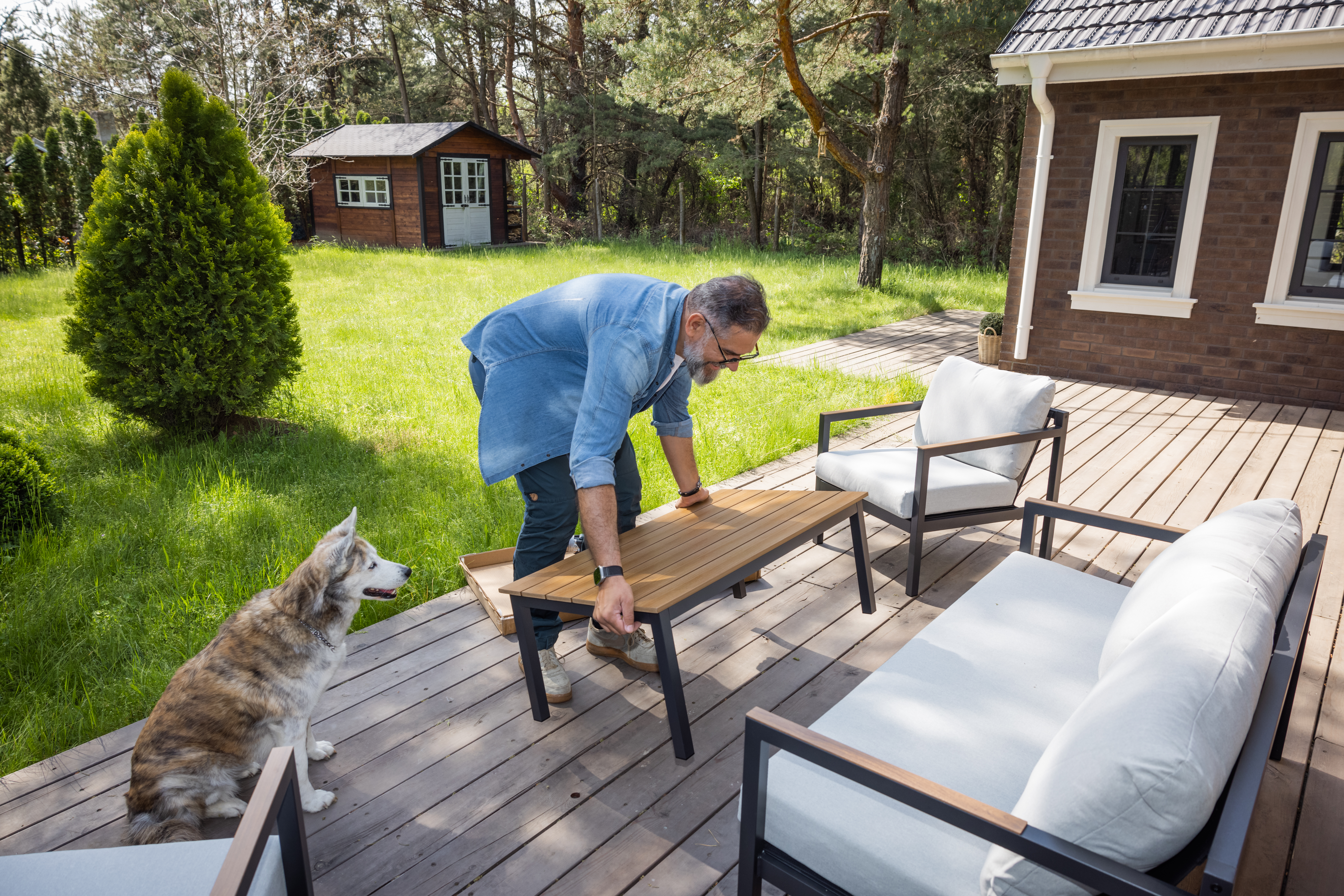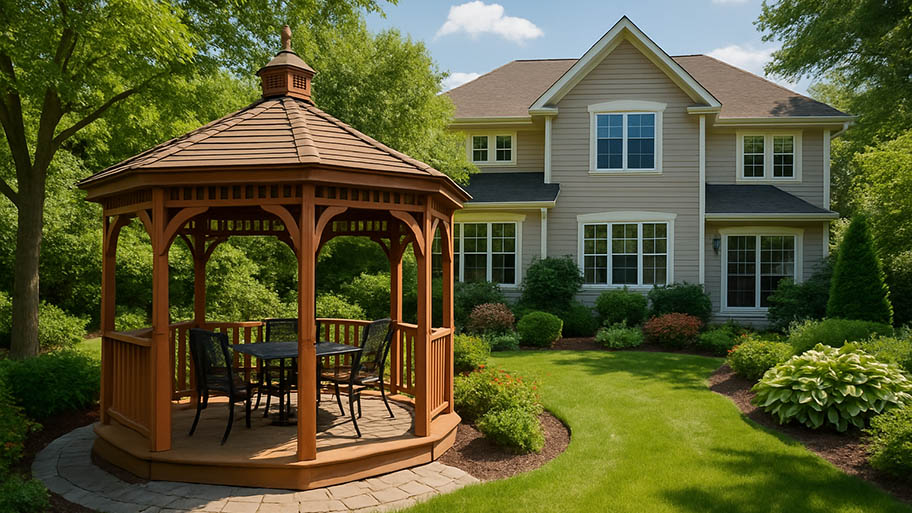
From patios and gazebos to full-on structures, your outdoor space is a blank slate. Learn how much it costs to build and furnish an outdoor room.
Water, weeds, and wobbles: The patio drama is real


Patios can last for decades with proper care and maintenance.
Water, weeds, and weather are the common causes of patio problems.
Homeowners can expect patio repair costs to average between $730 and $2,500.
The cost to install a new patio can jump to $14,000 based on size and labor costs.
You might be one of many homeowners who think their patio is a low-maintenance retreat. It's where you grill, gather, and soak up rays without worries. However, even the best-built patios can show signs of aging, from cracked slabs to wobbly pavers. Knowing how to spot and address common patio problems can save you money, prevent injuries, and extend the life of your little oasis.
Erosion, shifting soil, and sloppy base prep can all lead to wobbly, uneven, or sunken patio pavers. The result is an outdoor space that is not very pretty and doubles as a tripping hazard. Your relaxing outdoor space can quickly become a stumble zone if left unchecked.
Remove the affected pavers carefully.
Add or replace the base layer with compacted gravel or sand for a stable foundation.
Reset the pavers and tap them into place using a rubber mallet.
Lock the pavers in place by pouring polymeric sand into the joints, which prevents shifting.
Homeowners who live in areas that experience cold weather might see cracks in their concrete patios due to freeze-thaw cycles. In other cases, a poorly poured slab could be the issue, making it essential to know who installs concrete patios. Pros like these, including local deck repair specialists, understand the ins and outs of installation based on soil and weather conditions in your area.
Use a concrete patch or filler for small, surface-level cracks.
Apply epoxy injection or a resurfacing compound for deeper or wider cracks.
If cracking is extensive or grows after fixing, call a professional to assess the slab's structural integrity.
You have drainage issues if your patio resembles a bird bath or kiddie pool after rain. Pooling water leads to erosion, mildew, and structural damage over time. It’s a patio problem that often starts small but gets worse fast, causing sinking.
Check for blocked drainage channels or areas with improper slopes.
Regrade the surrounding area to encourage water runoff.
Install a French or channel drain to redirect water away from the patio.
Replace compacted sand with more porous materials for permeable paver patios to improve drainage.

You may think dandelions are cute, but weeds popping up between patio pavers are a persistent and unsightly issue. They’re caused by seeds settling into sand joints and thriving in the moist gaps, especially if the patio joints are not sealed or maintained regularly. When weeds are left unattended, they can cause pavers to shift and become uneven.
Pull existing weeds by hand or treat them with a patio-safe weed killer.
Replace old joint sand with polymeric sand, which hardens and resists future growth.
Apply a sealant over the entire surface to help block moisture and weed seeds.
If the edging around your patio shifts or separates, it can cause surrounding pavers to move or create gaps that invite destructive weeds and water. Over time, this instability can lead to larger structural issues and a patio that looks and feels unfinished or poorly maintained.
Remove the loose edging and check the base material underneath.
Reinstall the edging using stakes or paver edging restraints to keep it firmly in place.
Add extra gravel or sand along the edge for additional support and compaction.
Consider switching to a more durable edge restraint if the problem keeps recurring.

Some patio problems are as bright as day, while others appear to be no big deal at first and worsen over time. Keep an eye out for these red flags:
Pavers that are wobbly, uneven, or sinking
Cracks forming in concrete slabs or expanding over time
Water pooling or draining toward your house
Weeds sprouting between pavers or in patio joints
Loose, separated, or deteriorating edging
Furniture wobbling or leaning due to surface shifts
DIY fixes can go a long way, especially for minor issues. But not all patio problems are weekend warrior-friendly. If you're dealing with significant sinking, widespread cracks, or recurring drainage trouble, it's likely time to call in a professional. Usually, patio repair costs range from $730 to $2,500, depending on the problem and the labor cost in your area.
Remember, pros can assess what's happening beneath your patio's surface, recommend the safest and most effective solution, and ensure the job gets done right the first time. Paying for repairs can also save you a bundle. The cost to build a patio can easily skyrocket to $14,000, making the idea of paying for repairs early on worth it.
From average costs to expert advice, get all the answers you need to get your job done.

From patios and gazebos to full-on structures, your outdoor space is a blank slate. Learn how much it costs to build and furnish an outdoor room.

A deck skirt can improve the form and function of a deck. Find out what it could cost to install deck skirting in your backyard with this guide.

The average gazebo installation cost depends on the size and material. Keep reading to discover how much your gazebo may cost.

Discover the cost of removing a metal awning, including average prices, key cost factors, and expert tips to save on your project.

Paving a patio can be challenging if you’ve never taken on this type of yard project before. Learn how to perfectly pave your patio.

Concrete is ideal for an outdoor patio, walkway, or steps. Here are the questions to ask a contractor about your next concrete installation project.